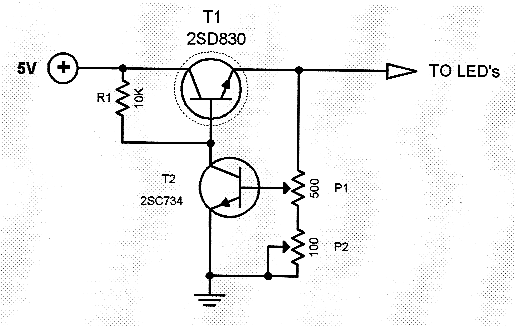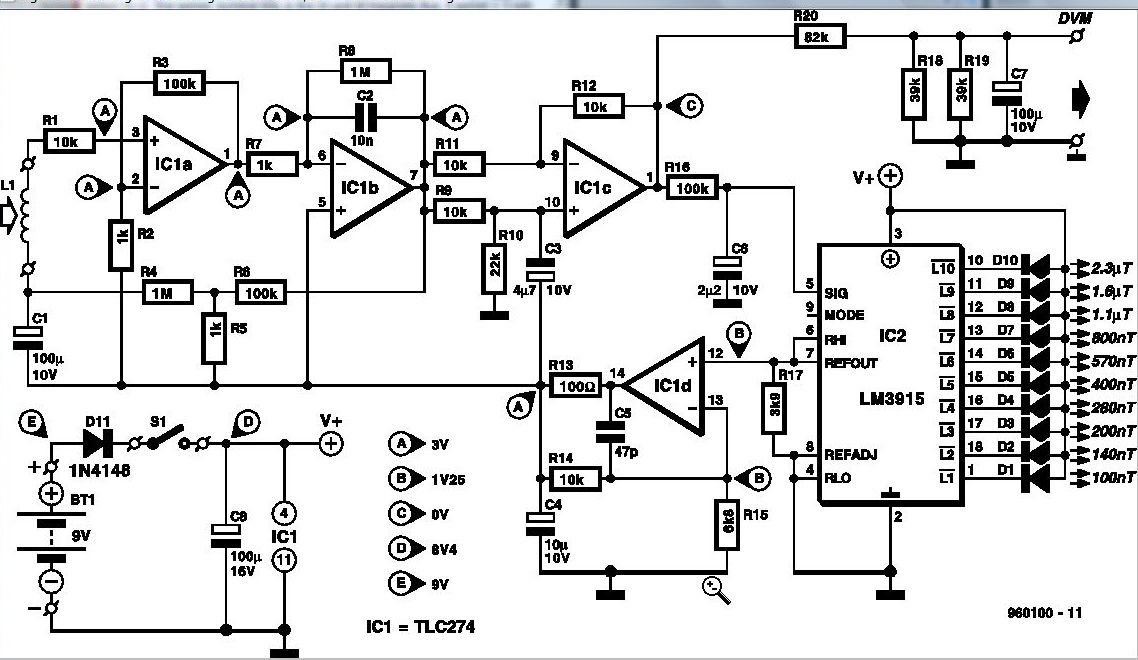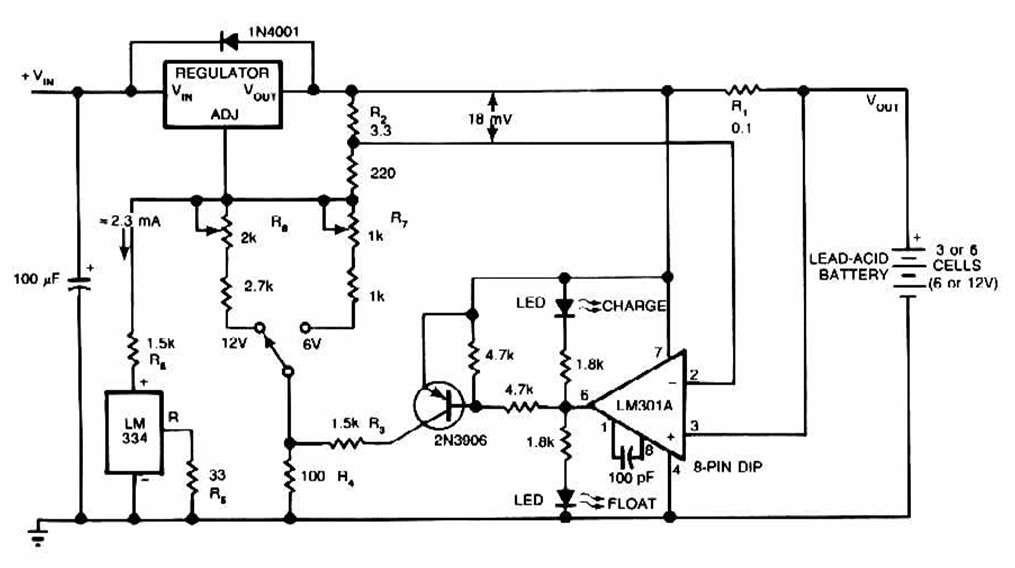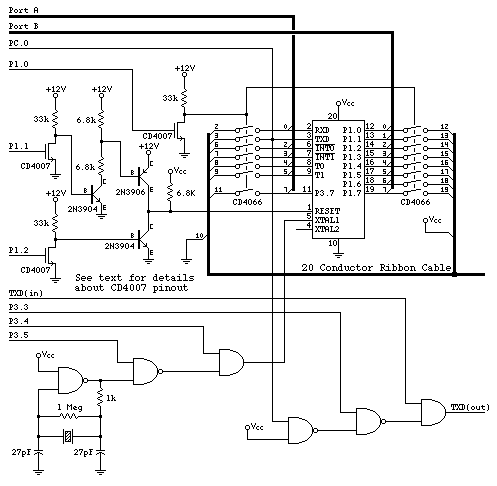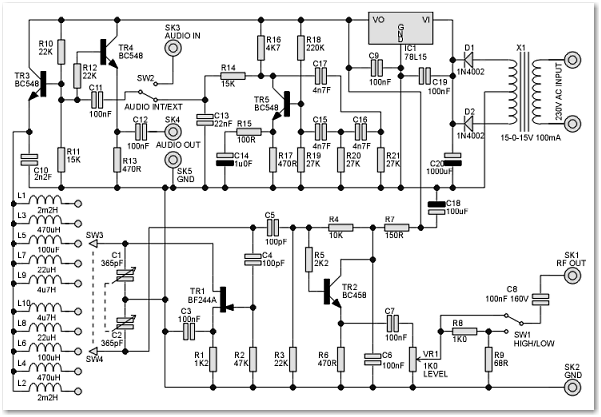
Motor Bike Headlight Controller Circuit
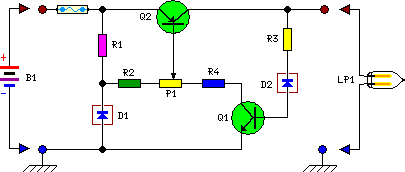
This circuit automatically activates and deactivates a motorcycle's headlight, functioning independently of both the light and ignition switches, as long as the battery is fully charged. The initial stage employs a 220-ohm resistor and ZD1 to keep transistor Q1 in an off state while the motor is not operational, drawing approximately 2mA. When the battery voltage surpasses 7.0V during charging, Q1 begins to conduct. The final stage utilizes a 220-ohm resistor and ZD2 to activate transistor Q2, which pulls the base of Q1 low, effectively turning it fully on. Due to the Vbe drop of Q2, ZD2 will deactivate Q2 at a battery voltage of around 6.7V. Consequently, the headlight remains illuminated most of the time while the motor is running and charging the battery. Heat sinks are necessary for both transistors. The circuit can be installed near the battery, with a single wire connecting to the headlight power feed.
This circuit design implements an automatic headlight control system for motorcycles, enhancing safety and convenience by ensuring that the headlight operates without manual intervention. The operation begins with the initial stage, where a 220-ohm resistor (R1) and a zener diode (ZD1) are configured to maintain the transistor Q1 in an off state when the motorcycle engine is not running. This configuration draws a minimal current of approximately 2mA, ensuring low power consumption when the system is inactive.
As the motorcycle engine starts and the battery voltage rises above 7.0V, the zener diode ZD1 allows sufficient voltage to turn on transistor Q1, initiating the headlight operation. This transition is critical as it signifies the system's readiness to engage the headlight once the vehicle is in operation.
In the subsequent stage, a second 220-ohm resistor (R2) and another zener diode (ZD2) are used to control transistor Q2. When Q2 is activated, it pulls the base of Q1 down, effectively saturating it and allowing current to flow through the headlight circuit. The configuration ensures that Q1 remains in a fully on state as long as the battery voltage is above the threshold set by ZD2. The Vbe drop associated with Q2 plays a crucial role in this process, as it ensures that Q2 will turn off when the battery voltage drops to approximately 6.7V, thereby preventing the headlight from depleting the battery excessively when the engine is off.
Heat management is a significant consideration in this design, as both transistors Q1 and Q2 will dissipate heat during operation. Therefore, appropriate heat sinks must be installed to prevent thermal overload and maintain reliable operation.
The compact design allows for the circuit to be mounted close to the motorcycle's battery, simplifying the installation process. A single lead connects the circuit to the headlight power feed, streamlining the wiring and enhancing the overall functionality of the motorcycle's lighting system. This automatic headlight control circuit not only improves visibility during rides but also reduces the risk of battery drain when the motorcycle is not in use.This circuit automatically turns a motor cycle`s headlight on and off, independently of both the light and ignition switches, provided the battery is fully charged. The first stage uses the 22O resistor and ZD1 to hold transistor Q1 off while the motor is not running; it draws about 2mA.
Once the battery voltage exceeds 7. 0V during charging, Q1 be gins to turn on. The last stage uses the 22O resistor and ZD2 to turn on transistor Q2, which pulls the base of Q1 down, switching it hard on. In conjunction with the Vbe drop of Q2, ZD2 will turn off Q2 at a battery voltage of about 6. 7V. In practice, this means that the headlight will be on most of the time while the motor is running and charging the battery.
Heatsinks are required for both transistors. The circuit can be mounted adjacent to the battery with a single lead going to the headlight power feed. 🔗 External reference
This circuit design implements an automatic headlight control system for motorcycles, enhancing safety and convenience by ensuring that the headlight operates without manual intervention. The operation begins with the initial stage, where a 220-ohm resistor (R1) and a zener diode (ZD1) are configured to maintain the transistor Q1 in an off state when the motorcycle engine is not running. This configuration draws a minimal current of approximately 2mA, ensuring low power consumption when the system is inactive.
As the motorcycle engine starts and the battery voltage rises above 7.0V, the zener diode ZD1 allows sufficient voltage to turn on transistor Q1, initiating the headlight operation. This transition is critical as it signifies the system's readiness to engage the headlight once the vehicle is in operation.
In the subsequent stage, a second 220-ohm resistor (R2) and another zener diode (ZD2) are used to control transistor Q2. When Q2 is activated, it pulls the base of Q1 down, effectively saturating it and allowing current to flow through the headlight circuit. The configuration ensures that Q1 remains in a fully on state as long as the battery voltage is above the threshold set by ZD2. The Vbe drop associated with Q2 plays a crucial role in this process, as it ensures that Q2 will turn off when the battery voltage drops to approximately 6.7V, thereby preventing the headlight from depleting the battery excessively when the engine is off.
Heat management is a significant consideration in this design, as both transistors Q1 and Q2 will dissipate heat during operation. Therefore, appropriate heat sinks must be installed to prevent thermal overload and maintain reliable operation.
The compact design allows for the circuit to be mounted close to the motorcycle's battery, simplifying the installation process. A single lead connects the circuit to the headlight power feed, streamlining the wiring and enhancing the overall functionality of the motorcycle's lighting system. This automatic headlight control circuit not only improves visibility during rides but also reduces the risk of battery drain when the motorcycle is not in use.This circuit automatically turns a motor cycle`s headlight on and off, independently of both the light and ignition switches, provided the battery is fully charged. The first stage uses the 22O resistor and ZD1 to hold transistor Q1 off while the motor is not running; it draws about 2mA.
Once the battery voltage exceeds 7. 0V during charging, Q1 be gins to turn on. The last stage uses the 22O resistor and ZD2 to turn on transistor Q2, which pulls the base of Q1 down, switching it hard on. In conjunction with the Vbe drop of Q2, ZD2 will turn off Q2 at a battery voltage of about 6. 7V. In practice, this means that the headlight will be on most of the time while the motor is running and charging the battery.
Heatsinks are required for both transistors. The circuit can be mounted adjacent to the battery with a single lead going to the headlight power feed. 🔗 External reference
